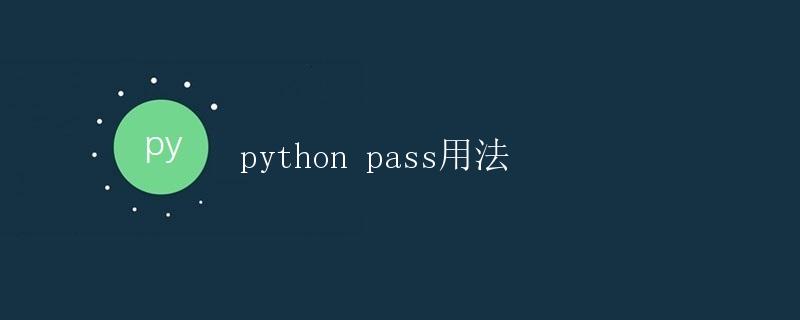Python pass usage
Python pass usage

In Python, the pass statement is a no-op. When Python syntax requires a statement (such as in an if statement or a loop) but the program does not need to perform any operation, the pass statement can be used as a placeholder to maintain code integrity and readability.
Usage Example
Example 1: Using pass in an if Statement
x = 10
if x > 5:
pass
else:
print("x is less than or equal to 5")
Running Result:
x is less than or equal to 5
In this example, when x is greater than 5, no action is performed, so the pass statement is used as a placeholder. When x is less than or equal to 5, “x is less than or equal to 5” is printed.
Example 2: Define an empty function
def my_function():
pass
In this example, an empty function my_function is defined. Because function definitions in Python require content, the pass statement can be used as a placeholder.
Example 3: Use pass in a for loop
for i in range(5):
pass
In this example, a simple for loop is executed, but we do not need to perform any operations within the loop, so the pass statement is used.
Example 4: Using pass in a Class Definition
class MyClass:
pass
In this example, an empty class MyClass is defined. The pass statement is also used as a placeholder to maintain the integrity of the code.
Summary
Through the above examples, we can see the usage and effectiveness of the pass statement. When writing code, you may need to preserve the structure of a section of code without performing any operations. In such cases, the pass statement can be used. It does not perform any operations; it serves as a placeholder, helping us maintain the integrity and readability of the code.